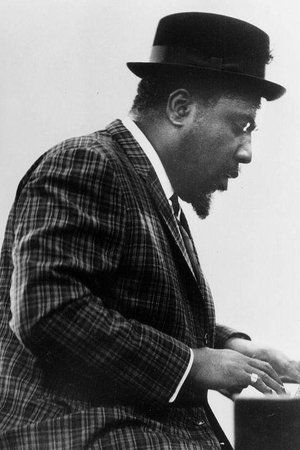

The first musical sounds he heard were from a player piano that his family owned. Thelonious Sphere Monk was born October 10, 1917, in Rocky Mount, North Carolina. "Illness eventually made it impossible for him to perform." He was "acutely sensitive and moody and perhaps a manic-depressive," according to the same review. Other scenes show him explaining his compositions and chord structures, giving instructions in terse, barely intelligible growls that even his fellow musicians found difficult to interpret." The film also provides glimpses into the emotional turbulences in his personal life. Closeups of Monk's hands on the keyboard reveal a technique that was unusually tense, spiky and aggressive. According to a New York Times interview, the film features "some of the most valuable jazz ever shot.

There is, however, the excellent 1989 film documentary, Straight, No Chaser (Warner Bros.), which combines footage shot in the late 1960s with more recent interviews with his son, Thelonious Monk, Jr., tenor saxophonist Charlie Rouse, and others. Surprisingly, there are no biographies in book form on Monk. There was also the way he talked: He and his peers-saxophonist Charlie Parker, trumpeters Dizzy Gillespie and Miles Davis, drummer Max Roach, and tenor saxophonist Sonny Rollins-were known for popularizing such expressions a "groovy," "you dig, man," and "cool, baby." But most Americans first heard of him in the early 1950s when he and a couple of friends were arrested for allegedly possessing drugs-for Monk, one among other instances of legal harassment that would create severe obstacles in his work. With his strange hats, bamboo-framed sunglasses, and goatee, he became an obvious subject for Sunday supplement caricatures. They had plenty of material as the New York Post wrote, Monk was "one of jazz's great eccentrics." During concerts and recording sessions he would rise from his bench every so often and lunge into a dance, emphasizing the rhythm he wanted from his bandmembers with his 200-pound frame. As he himself succinctly explained it, 'I just walk and dig."'īecause Monk's music was beyond the grasp of most listeners, the media tended to look for peripheral details to write about. Jazz," commented Keyboard, "that he would walk the New York streets for hours or stand still on a corner near his apartment on West 63rd Street, staring into his private landscape and running new songs and sounds through his mind. Aside from his wife and two children, his music was his life. He never spoke to his audiences end rarely granted interviews, preferring to let his music speak for itself.

Though his career was beset by personal and societal obstacles, Monk always believed in his music. "Round Midnight" is considered "one of the most beautiful short pieces of music written in twentieth-century America," as record producer Orrin Keepnews noted in Keyboard Magazine. Many of his works, which number over 60, are jazz classics.
Thelonious monk family professional#
Amateur and professional pianists continue to cite him as a major influence in their styles. By the time of his death in 1982 he was widely acknowledged as a founding father of modern jazz.Īspects of his compositions that once were ridiculed are now analyzed at colleges and universities throughout the country. "To them, Monk apparently had ideas, but it took fleshier players like pianist Bud Powell to execute them properly." The debate over his talent and skill continued as the years passed, but Monk eventually found himself with a strong following. Critics and peers took these as signs of incompetency, giving his music "puzzled dismissal as deliberately eccentric," as Jazz Journal noted. He flattened his fingers when he played the piano and used his elbows from time to time to get the sound he wanted.
Thelonious monk family full#
His melodies were angular, his harmonies full of jarring clusters, and he used both notes and the absence of notes in unexpected ways.

When Thelonious Monk began performing his music in the early 1940s, only a small circle of New York's brightest jazz musicians could appreciate its uniqueness.


 0 kommentar(er)
0 kommentar(er)
